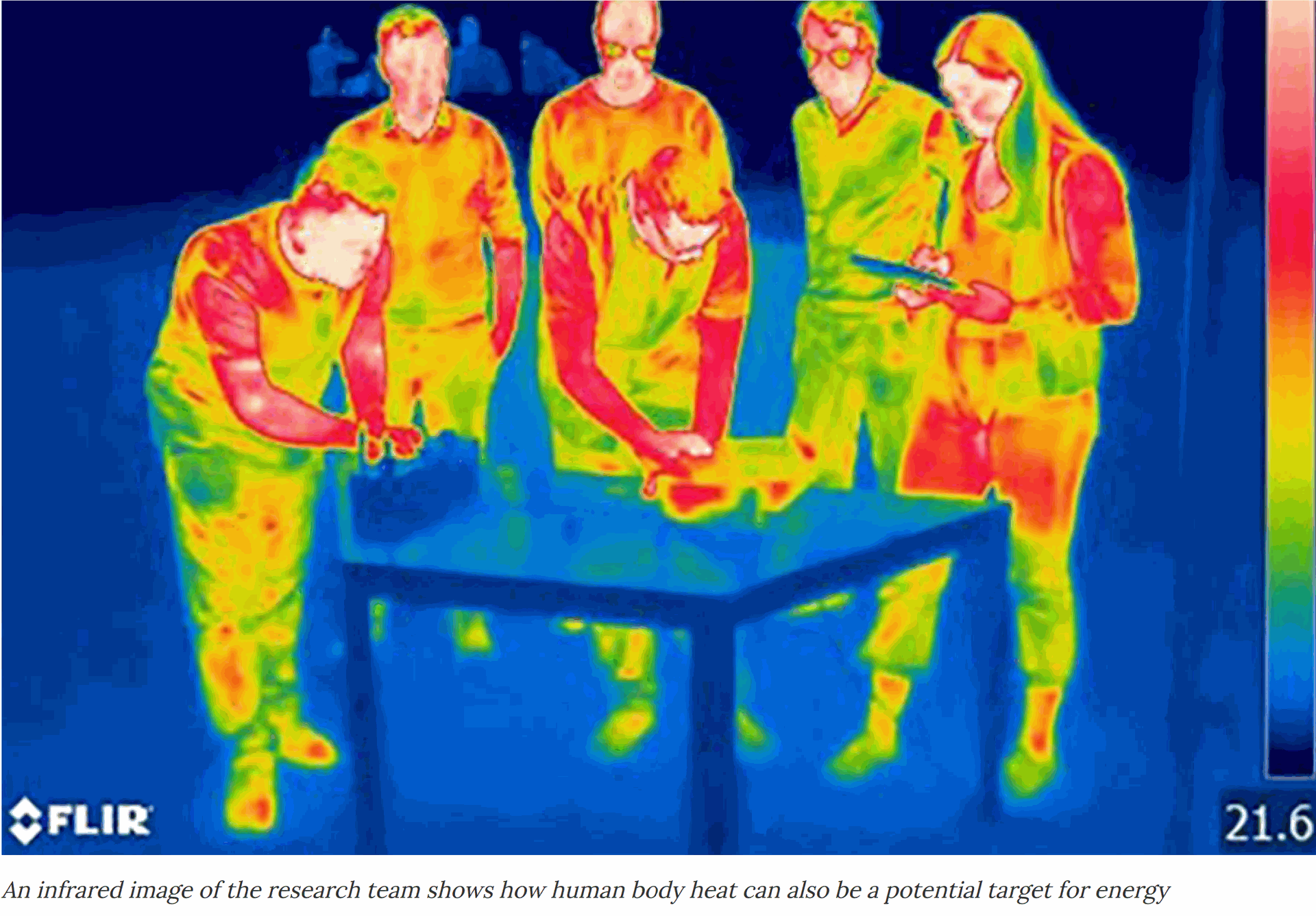Everybody knows that you can’t generate solar power at night, right?
Well, for most of human history, everyone “knew” that it was impossible to see in the dark as well.
Then came the invention of night-vision goggles and… bam! That piece of conventional wisdom had to be tossed out the window.
Believe it or not—by deploying the same type of tech used in night-vision goggles—a group of creative scientists in Australia actually found a way to generate solar power at night.
Thermal radiation
As anyone who’s ever touched a black surface on a hot sunny day knows, the sun doesn’t just provide us with light.
The earth’s crust also absorbs heat from sunlight in the form of thermal radiation. Unfortunately, however, when the sun sets, all that solar energy gets wasted as it starts dissipating into space.
The research team from the ARC Centre of Excellence in Exciton Science and the University of New South Wales (UNSW Sydney) have figured out how to harness all that wasted thermal radiation and turn it into electricity.
Their new device employs similar tech to what you’d find in a standard pair of night-vision goggles.
Team leader Nicholas Ekins-Daukes explained:
“In the late 18th and early 19th century, it was discovered that the efficiency of steam engines depended on the temperature difference across the engine, and the field of thermodynamics was born. The same principles apply to solar power – the sun provides the hot source and a relatively cool solar panel on the Earth’s surface provides an absorber. This allows electricity to be produced. However, when we think about the infrared emission from the Earth into outer space, it is now the Earth that is the comparatively warm body, with the vast void of space being extremely cold."
"By the same principles of thermodynamics," the scientist continued, "it is possible to generate electricity from this temperature difference too: the emission of infrared light into space.”

The team’s device—which they’ve dubbed a "thermo-radiative diode”—piggy-backs on work done by a Norwegian scientist named "Rune Strandberg," the first person to suggest the theoretical possibility of generating solar power at night.
Scientists at Stanford University are also looking into other methods for harnessing all the wasted thermal energy that starts leaking into space at sunset.
And, though Ekins-Daukes and his team have actually managed to make it happen, don't get too excited yet. As things stand, their prototype thermo-radiative diode only generates a measly 0.001% of the electricity produced by a conventional solar panel.
So, you probably shouldn't expect to see solar cells that work at night on the market any time soon.
As Ekin-Daukes himself noted, “We do not yet have the miracle material that will make the thermo-radiative diode an everyday reality, but we made a proof of principle and are eager to see how much we can improve on this result in the coming years.”
Hopefully, before that day arrives, the folks in marketing will have come up with a more catchy name than "thermo-radiative diode."
In the meantime, you can find the team’s full report on their groundbreaking invention in the science journal ACS Photonics.